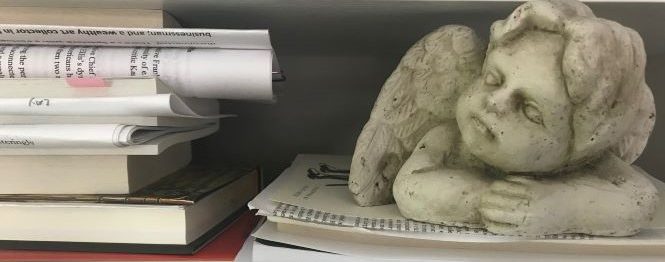 Parisians are reading Ernest Hemingway’s classic memoir, A Moveable Feast, in droves. According to The Atlantic: “The Paris memoir, published posthumously in 1964, holds the top spot on Amazon’s French site, has sold out of stock at a number of bookstores and, as Le Figaro reports, has become a fixture among the flowers in memorials across the city.”
Parisians are reading Ernest Hemingway’s classic memoir, A Moveable Feast, in droves. According to The Atlantic: “The Paris memoir, published posthumously in 1964, holds the top spot on Amazon’s French site, has sold out of stock at a number of bookstores and, as Le Figaro reports, has become a fixture among the flowers in memorials across the city.”
The memoir recounts Hemingway’s Parisian life between 1921 and 1926 when he was a poor, unknown writer married to his first wife, Hadley Richardson. They lived above a sawmill on Rue Notre Dame des Champs. Hemingway wrote in the city’s cafés and shared encounters with fellow budding scribes F. Scott Fitzgerald and Ezra Pound. The 1920’s are the famous years when young American expatriate artists experienced the City of Light with passion, friendship and hope. Hemingway writes about his time there with affection and vivid evocations of Paris’s streets, shops, people and monuments, capturing a resonant joie de vivre that’s come to symbolize the city. The New York Times wrote: “No one has ever written about Paris in the nineteen twenties as well as Hemingway.”
No wonder the Parisians are reading A Moveable Feast right now.
Penguin Classics is publishing this month a new translation of another classic featuring life in Paris. The Mysteries of Paris by Eugène Sue, translated by Carolyn Betensky and Jonathan Loesberg, is not a memoir, rather a fictional story that was serialized in 150 episodes in the daily newspaper Journal des Débats in 1842. “It was certainly the runaway best seller of nineteenth-century France, possibly the greatest best seller of all time,” writes Peter Books in an article in The New York Review of Books, which appears in different form as the foreword to the book. The Mysteries of Paris is about rich and poor Parisians engaging in life together and the signature character Rodolphe, described by Penguin Classics as “a magnetic hero of noble heart and shadowy origins”. The book is said to have inspired Victor Hugo’s Les Misèrables that was published two decades later in 1862.
Peter Brooks goes on to write about The Mysteries of Paris:
“It’s hard to estimate its audience, since each episode was read aloud, in village cafés throughout France, in workshops and offices. Diplomats were late to meetings, countesses were late to balls because they had to catch up on the latest episode. It was a truly national experience, magnetizing in the way celebrity trials have been in our time, maintained addictively from one installment to the next in a manner we now know through the television serial.”
Well, dang! That certainly incites a reader to want to hurriedly buy the book and settle in for the desired biblio-oblivion of an imagined world. But hang on – The Mysteries of Paris is more than 1,000 pages, an investment of time that in the 21st century isn’t so readily accessible. I imagine, though, if one approached the book as did its 19th century audience, in daily installments, it might yield its original grip, anticipation and excitement.
Peter Brooks writes in the NYRB article:
“[Author Eugène] Sue creates a fabulous cast of characters, from the villainous to the virtuous, and he manages their entries and exits expertly, interweaving five or six different plotlines in order to maintain suspense and keep the reading experience one of high tension. His characters act out their psychic lives in the heightened words and gestures of melodrama.”
I’m not attempting to draw comparisons between Hemingway’s memoir and Sue’s melodrama. Their juxtaposition here is only for their current, respective states of new popularity and new translation. I suppose there is not one answer for why Hemingway’s A Moveable Feast became the choice of comfort for Parisians after the November 13 terrorist attacks; however, one could surmise that it, above all other books about Paris, evokes the true heart of the city that will endure, no matter what happens. And for us, on this side of the Atlantic Ocean, perhaps The Mysteries of Paris in its new translation will be the classic to read in honor of the City of Light.

I followed your link and just read the first chapter (2009 trans at Amazon). Now, I look forward to the new edition. Great posting, thanks.
LikeLike
Thanks for your comment! I have a feeling it’s a great story that’s been overlooked. And at the hands of new translators,it could mean a whole, new, fresh rendition.
LikeLiked by 1 person
Want to enhance your web site but do not know where to begin?
LikeLike